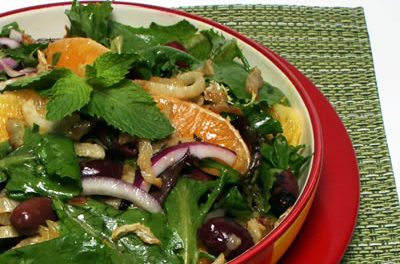One barrier to healthy eating noted frequently in consumer surveys is the perception that nutritious foods are more expensive than less healthy alternatives. But a new study, published in the Journal of the American Dietetic Association, found that choosing healthy food does not, in fact, increase the grocery bill. As families who participated in the study got more practice at making healthier choices, food costs actually dropped.
This study, which encouraged nutritious eating and weight control, grouped foods into three categories. Participants were encouraged to eat plenty of foods like fruits and vegetables, which are high in nutrients and low in fat and calories. Foods with important nutrients but slightly higher fat content were to be included in amounts appropriate to individual needs. An important part of the program involved decreasing consumption of a third group of foods: those that are lower in nutrients and higher in calories and fat. Participants were encouraged to limit this group (which also included foods low in fat and calories but also low in nutritional value) to no more than 15 servings per week.
At the end of the study, the overweight children and parents ended up five to eight percent less overweight than at the beginning. Contrary to the belief that healthier eating is more expensive, costs actually decreased after one year, falling to the level of the low-cost food plan devised by the U.S. Department of Agriculture.
Eating less of the foods that are low in nutrients and high in fat was largely responsible for both weight loss and lowered costs. Initially, these foods comprised about 60 percent of the food eaten and over 62 percent of food costs. After a year, they accounted for only 40 to 50 percent of the food eaten and about 50 percent of food costs.
Many consumers focus on the "high" cost of healthful foods like fruits and vegetables, but forget that high-fat meats, "convenience" foods, snacks, bakery items, soft drinks and other less nutritious foods can add up to significant expense. For most people, healthier eating is not just about adding more fruits and vegetables; it also involves using them to replace high-calorie/high-cost foods.
Content Continues Below ⤵ ↷
A more healthful diet may also reduce food costs when portion sizes are downsized to match actual physical hunger. Buying less food means food costs will go down.
The drop in food costs in this study did not occur immediately. Most of the drop occurred six to twelve months after the program started. Researchers observe that at first, families may have tried to reduce fat and calorie consumption while keeping habits essentially the same. For example, they may have switched from regular to reduced-fat foods. As time went on, they may have made larger shifts in food choices or preparation.
It is possible, of course, that healthier eating habits could lead to higher costs if purchases include out-of-season produce, for example, low-fat desserts, exotic juices, or seafood. But the important fact, proven by research, is that health-savvy eating can also be budget-savvy. And that's before you consider the long-term payoff of lowered risk of cancer and other health problems.
AICR









